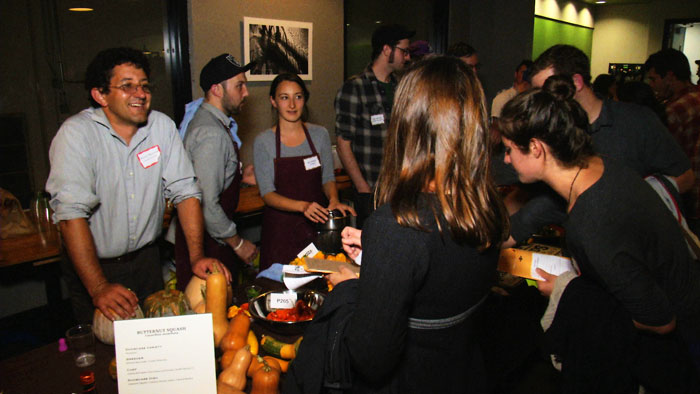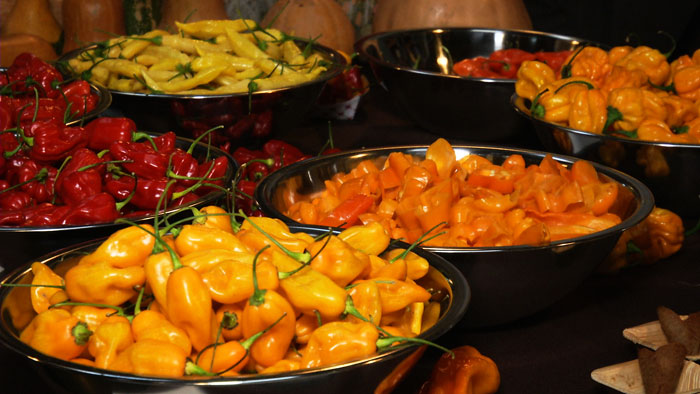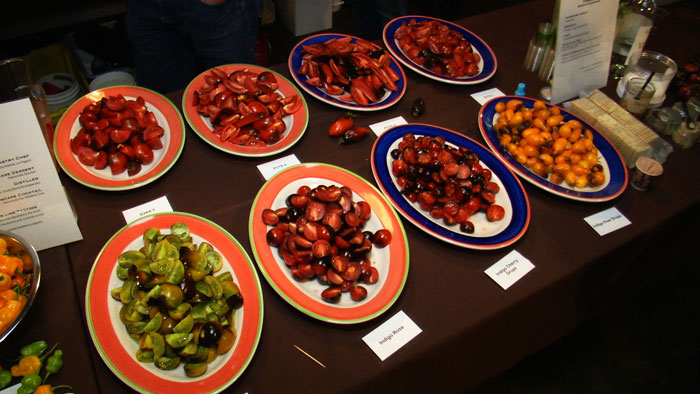“…chefs are now knowing the farmer and having a lot closer relationship with them. So now, we’re just taking it a few steps further, we’re looking at where the seed comes from, who grew it, and then who that breeder was that developed that variety”
Plant breeders, seed growers, farmers and chefs unite to provide better food for eaters
The Culinary Breeding Network (CBN) hopes to “bridge the gap between breeders and eaters” to improve the quality and diversity of commercially available vegetable varieties and to enhance the culinary experience.

In the above video, we talk with Lane Selman about the Culinary Breeding Network and their showcase event that we filmed for this video. We also talk with some of the other participants, and sample an exotic array of fresh vegetable varieties and learn more about their origins.
Purchase directly from our store without leaving this page.
The Inspiration that led to the birth of the Culinary Breeding Network
Enter Lane Selman, an agricultural researcher at Oregon State University. Selman works with diversified organic vegetable farmers helping them better manage disease and pest related problems. Selman began her work on potatoes and knew that the particular variety of a plant can determine whether it grows in a hearty manner or succumbs to disease or pest damage. The 1840 great potato famine in Ireland is a case in point. There are certain potato varieties that are highly resistant to that disease (potato blight) had they been grown back then.
Indeed, the role of the traditional plant breeder, either a university researcher or a farmer that grows vegetable crops for seeds (a seed grower), is actively breeding to produce plants that possess a certain set of desired characteristics. Natural resistance to disease, appearance, drought tolerance, are but a few commonly desired attributes that breeders seek to create. But breeders are not often connected with other eaters or chefs through their work. Walk with a potato breeder through a field, Selman says, “you’re looking at the mounds, basically the harvest, all they care about is: are there a lot of them? Are they the same size? And they walk by if they’re not. But there are treasures in there, [but] they’re not tasting them”.
Chefs play a critical role in the equation. By virtue of their chosen profession, they tend to have highly developed palettes for taste. They are not primarily cooking for themselves; they are cooking for their restaurant customers. As chef Dan Barber describes in his latest book, The Third Plate and in our recently published interview, there’s a long tradition of cuisine that comes from what’s available to eat on the land and how chef’s have helped introduce new foods into a culture.
They also can play a vital role during the breeding process. As Selman explains, “I was working with finished varieties” and having them taste the final result. “Which do you like best? But that’s fantastic to know, it’s a bit of a dead-end conversation because it’s done.” Selman hopes to take the Culinary Breeding Network back to the beginning of the breeding process, working with a breeder to evaluate all the possibilities and “help guide the breeder with his or her work and in a true community driven plant breeding format.”


